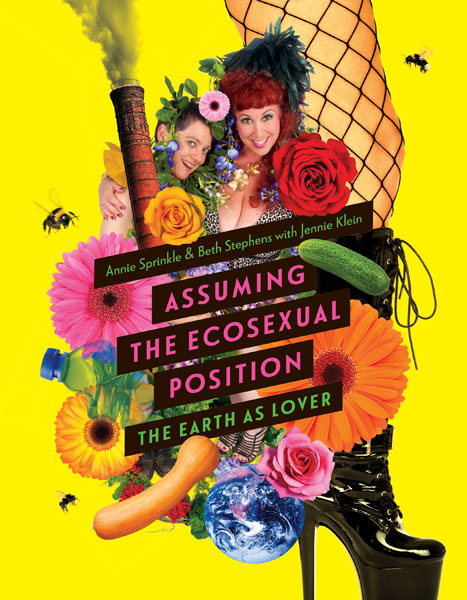The Earth as Lover, the Collective as Lover. Ecosexual and Posthumanist Perspectives in Performance Art
The Earth as Beloved, the Collective as Beloved
DOI:
https://doi.org/10.17169/ogj.2022.211Keywords:
Activism, Love, Nature, Performance, QueerAbstract
The book "Assuming the Ecosexual Position" tells the story of Annie Sprinkle and Beth Stephens as loving collaborators working together and offers a pleasurable and performative (over)view into their joint (performance) work. The artists have been developing public wedding performances since 2005, and in 2008 they married their more-than-human beloved for the first time in the form of the Green Wedding performance: the earth. Sprinkle and Stephens made a political statement against discrimination with their weddings, as marriage for all was not yet federally legal in the US in the 2000s. With the founding of the performative "Love Art Lab" - which is the focus of the book - the artists celebrated further dazzling wedding performances with the moon, the sky or the Appalachians, among others, together with many collaborators. With their work and this book, the artists are writing another piece of performance history.
References
Bauhardt, Christine (2018): Ökofeminismus und Queer Ecologies: feministische Analyse gesellschaftlicher Naturverhältnisse. In: Kortendiek, Beate/Riegraf, Birgit/Sabisch, Katja (Hg.): Handbuch Interdisziplinäre Geschlechterforschung. Wiesbaden: Springer VS, 467–478. doi: 10.1007/978-3-658-12500-4_159-3
Bennett, Jane (2010): Vibrant Matters. A Political Ecology of Things. Durham: Duke University Press. doi: 10.2307/j.ctv111jh6w
Engel, Antke/Govrin, Jule Jakob/von Redecker, Eva (2016): Lust an Komplexität und Irritation. 10 Jahre Institut für Queer Theory. Berlin: institute for queer theory.
Haraway, Donna (2018): Unruhig bleiben. Frankfurt/New York: Campus Verlag.
Haraway, Donna (2016): Manifest für Gefährten. Berlin: merve.
Kronberger, Alisa (2022): Diffraktionsereignisse der Gegenwart. Feministische Medienkunst trifft Neuen Materialismus. Bielefeld: transcript. doi: 10.1515/9783839461310
Mellor, Mary (1997): Feminism and Ecology. New York: New York University Press.
Plumwood, Val (1993): Feminism and the Mastery of Nature. London/New York: Routledge.

Downloads
Published
How to Cite
License
All contributions in Open Gender Journal are published under the Creative Commons Attribution 4.0 International license. You may freely make use of the corresponding texts in accordance to the conditions of the license (License contract, generally understandable version). There is no exclusive transfer of usage rights ("copyright transfer"). Open Gender Journal does not charge authors any costs for publication (so-called Article Processing Charges, APC) or submission (so-called Submission Charges). Authors are encouraged to share their contributions in other places, such as repositories.













